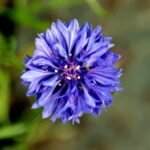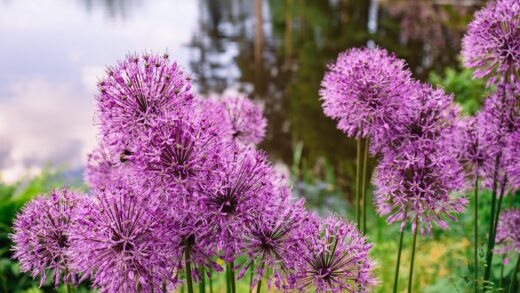Light requirements of the Delta maidenhair fern

The key to nurturing a vibrant and healthy Delta maidenhair fern lies in a profound understanding of its specific light requirements. This plant’s delicate, paper-thin leaflets are not equipped to handle the intensity of direct sunlight, which can quickly lead to scorching, browning, and irreversible damage. In its native tropical habitat, it thrives in the dappled light of the forest floor, sheltered by the dense canopy of taller trees. Replicating this gentle, filtered illumination is paramount for its successful cultivation indoors, making the selection of its location a critical decision.
The ideal light for a Delta maidenhair fern is best described as bright, but indirect. This means placing it in a location where it receives plenty of ambient light to fuel its photosynthesis, but where the sun’s rays never fall directly onto its foliage. Too little light is also detrimental, as it will result in sparse, weak growth and a lack of the lush, dense appearance that makes this fern so appealing. The plant will stretch towards the light source, and the fronds may appear pale or yellowish, signaling a need for a brighter environment.
Finding the perfect balance is a matter of observation and understanding the movement of light within your home throughout the day and across the different seasons. The orientation of your windows plays a significant role in determining a suitable spot. Locations that might seem ideal can have brief periods of intense, direct sun that can harm the plant. Therefore, monitoring a potential new spot for a full day before placing the fern there is a wise precautionary measure.
Ultimately, the fern itself will communicate its needs through the appearance of its foliage. Lush, vibrant green fronds that are held upright indicate that the light conditions are just right. Conversely, scorched, brown spots or pale, leggy growth are clear signals that the lighting is either too intense or insufficient. By learning to read these cues, you can fine-tune the plant’s placement and provide the perfect luminous environment for it to flourish.
The dangers of direct sunlight
Direct sunlight is the single greatest threat to the foliage of the Delta maidenhair fern. Its leaflets are exceptionally thin and delicate, lacking the protective waxy cuticle that allows many other houseplants to tolerate direct sun. When exposed to the harsh, unfiltered rays of the sun, even for a short period, the cells in the leaves can be quickly damaged. This damage manifests as scorched, brown or bleached-white patches on the fronds, which will not recover or turn green again.
More articles on this topic
The intensity of sunlight varies depending on the time of day and the direction a window faces. West and south-facing windows receive the most intense direct sunlight, especially during the afternoon, and are generally unsuitable locations for a maidenhair fern unless it is placed several feet back from the window or shielded by a sheer curtain. Even an east-facing window, which provides gentler morning sun, can be too intense during the peak summer months. The damage can occur surprisingly quickly, sometimes in less than an hour of direct exposure.
It is important to be mindful of how the angle of the sun changes with the seasons. A spot that is perfectly shaded during the summer might receive direct sunbeams during the winter when the sun is lower in the sky. This is why it is crucial to periodically re-evaluate the plant’s location throughout the year. What was a safe spot in August might become a danger zone in January. Constant observation is necessary to protect the fern from seasonal shifts in light.
If you accidentally expose your fern to direct sun and notice scorching, immediately move it to a more appropriate, shaded location. While the damaged fronds cannot be repaired and should eventually be pruned off to improve the plant’s appearance, the plant itself can often recover if the exposure was brief and the root system is healthy. Providing high humidity and proper watering will help the plant recover from the stress and encourage the growth of new, undamaged fronds.
Finding the ideal indoor location
The quest for the perfect location for a Delta maidenhair fern is a search for consistent, bright, indirect light. In the northern hemisphere, a north-facing window is often the gold standard. These windows provide gentle, indirect light for the entire day without the risk of receiving any direct solar radiation. Placing the fern on a windowsill or a table directly in front of a north-facing window is typically a safe and effective choice, providing ample light for healthy growth.
More articles on this topic
An east-facing window can also be an excellent location, as it receives the less intense rays of the morning sun. In most cases, this gentle morning light is not strong enough to scorch the fronds. However, it is still wise to observe the location for a few days to ensure the sun is not too direct, especially during the height of summer. If the morning sun seems too strong, placing the fern a few feet back from the window or filtering the light with a sheer curtain will provide the necessary protection.
South and west-facing windows present the biggest challenge due to the intensity of the afternoon sun. While these locations offer the brightest light, they are often too bright for a maidenhair fern. If these are your only options, the fern must be positioned well away from the window, far enough back that it is in the bright ambient light of the room but never in the direct path of the sun’s rays. Alternatively, it can be placed behind other, larger plants that can act as a natural filter for the light.
Beyond windows, consider other areas of your home that are naturally bright but shaded. A spot in a bright bathroom with a frosted glass window can be perfect, offering both filtered light and the high humidity the fern loves. A bright corner of a living room, several feet from any window, can also work well. The key is to assess the quality of light. If the light is strong enough to cast a soft, fuzzy shadow, it is likely sufficient. If it casts a sharp, well-defined shadow, it is too direct.
Interpreting the plant’s signals
The Delta maidenhair fern is very communicative about its lighting conditions, and its foliage provides clear feedback. When the light is ideal, the fern will have a lush, dense appearance with vibrant, medium-green fronds. It will produce new growth regularly during the growing season, and the stems will be strong enough to hold the fronds in their characteristic graceful arch. A plant that looks healthy and vigorous is the best indicator that its light needs are being met perfectly.
If the fern is receiving too little light, it will exhibit several tell-tale signs. The growth may become sparse and ‘leggy,’ with long stems and fewer, smaller leaflets as the plant stretches in search of more light. The overall color of the foliage may become a dull, dark green or even yellowish, and the plant will have a general lack of vitality. A significant slowdown or complete cessation of new growth during the spring and summer is another strong indication that the plant is in a location that is too dim.
Conversely, a fern receiving too much light, even if it is not direct sun, will also show signs of stress. The foliage may appear pale, washed-out, or bleached. The delicate leaflets might start to yellow and develop crispy brown edges, even if humidity and watering are adequate. This is a sign that the light intensity is too high, causing the plant to struggle. These symptoms are a clear signal to move the plant to a more shaded location with gentler illumination.
Regularly rotating your plant is also important to ensure even growth on all sides. A plant that is not rotated will tend to grow towards its light source, resulting in a lopsided appearance. Giving the pot a quarter turn every week or so encourages a more symmetrical and aesthetically pleasing shape. This simple practice, combined with observing the color and density of the foliage, will allow you to provide the optimal light for a beautiful and thriving Delta maidenhair fern.

















